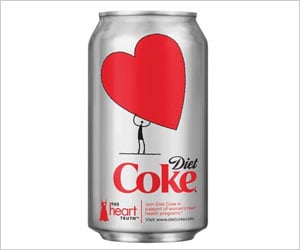Clothes being washed in a high-tech waterless washing machine and a bathroom that will tell you if you are sick.

Such an outlandish vision could come straight from a science fiction novel but it's actually what life could be like in less than 20 years according to Which? Magazine.
The consumer champion has just published a report predicting what the technological breakthroughs and the social and economic trends could be by 2030, the Daily Express reported.
Most eye-catching of all their forecasts is a Rechargeable Kids System that would go some way to tackling childhood obesity and rising energy costs.
Youngsters in the future could be wearing special trainers that generate and store energy as they run around outside, which would then be used to power electronic goods such as TVs and games consoles.
A shoe rack would double up as an electricity distribution hub so when a child places the trainers on the rack, their energy transfers straight to their bedroom.
"The one drawback is that they have to make sure the trainers don't get too muddy as this interferes with the shoes' ability to convert sunlight into electricity," the report said.
Sensors in the toilet and sink would take biological readings and screen them for illnesses such as viruses, as well as check for kidney function, glucose levels and digestive health.
The data would be sent to a microchip embedded in a wristband where it is analysed against a users' medical records and individual DNA patterns.
All the analysis would be displayed on the bathroom mirror, which is activated by mobile phone so the user has control of when and where they want to view it.
According to Which?, and think-tank Forum for the Future, which it worked with, "the microchip measures vital signs like body temperature, calories burned, heart rate and sleep quality so all this information is collated."
"It also provides a full consultation and recommendations every month, with an extra option of adding dietary recommendations to your online shopping list to help you plan meals around the nutrients your body needs," they said.
With the earth's natural resources running thin, conservation will be the buzz word in 17 years time, Which? predicts.
Water companies, in particular, will start searching for ways to cut water demand to lift pressure on supplies.
One possibility is that customers will be given the opportunity to switch from a traditional water tariff to one that includes a washing machine that cleans clothes by using a chemical solvent and only a tiny amount of water.
By 2030, recycling is likely to be even more prominent than it is today. Scientists could invent a handheld device that scans objects to identify what materials they contain and then offers ideas of what they could be transformed into.
With a quarterly subscription, customers would be able to select additional materials from an online library and to choose, adapt and personalise their designs.
The old product could be picked up, taken to a warehouse and converted into something new within about two weeks, both saving the customer money and cutting down on waste.
Austerity measures will also still be in place in the future, according to the study.
By 2030, the average weekly household disposable income could be just 589 pounds, which is below the 2008 peak of 605 pounds and only marginally more than the current level of 558.60 pounds.
The cost of essential goods is expected to take up an increasing proportion of consumer spending, rising from 56.8 percent in 2012 to 65.3 percent in 2030.
House prices may have fallen back during the recent recession but by 2030 the trend looks set to reverse, with the price of the average home steadily rising.
Driven by population growth and investors seeking a safe haven for their cash; the price of the average home is projected to increase from 217,440 pounds in 2012 to over 435,000 pounds by 2030.
It means that in the near future we may see millions more younger people forced to live on at home with their parents and other members of their family in multi-generational homes.
Source-ANI
 MEDINDIA
MEDINDIA


 Email
Email




